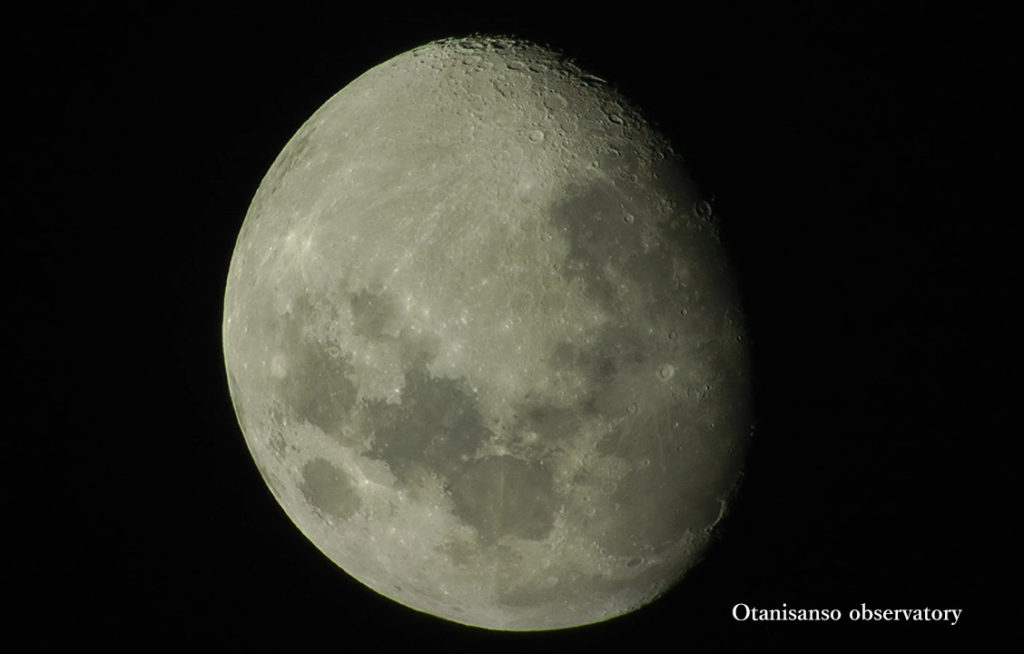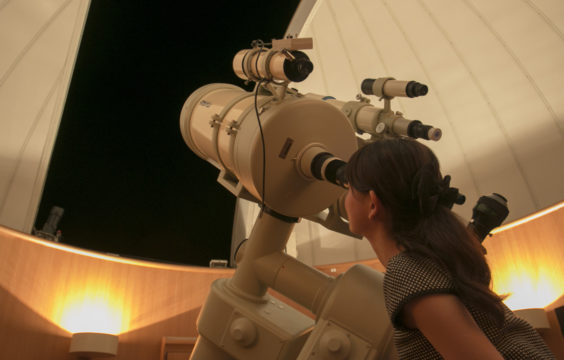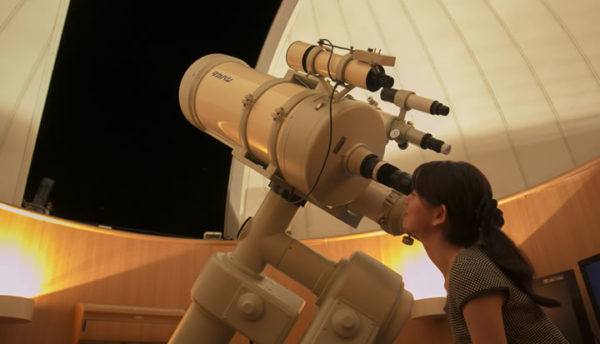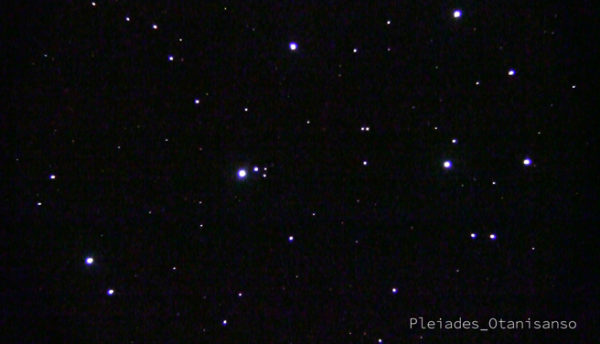Taking in the winter stars, when moonlit nights are more beautiful

Greetings from the Otani Sanso Astronomical Observatory Dome.
The following information on Nagato’s starry skies is an introduction to what can be observed here in January, 2019.
Just as in December, this month visitors will be able to see the Pleiades and the Constellation of Orion. Towards the end of the month, we’ll be able to see Sirius in the southern sky. Bring your coat, and come take a look at the winter skies directly through the telescope. (Image above: Photographd at Otani Sanso Astronomical Observatory Dome)
About “Sirius,” which burns brightly in the winter sky
Sirius is a star that can be seen at a relatively low position in the southern sky. Sirius is a star in the Canis Major constellation, and appears to be the second brightest star in the sky after our own sun. In Greek, its name means “the scorcher.” Sirius’ apparent magnitude is -1.5. Though Sirius is the brightest of the fixed stars in the sky, it is not the star with the greatest instrinsic brightness. This is because, at a distance of 8.6 light years, Sirius is quite close. It’s apparent brightness is referred to as its “apparent magnitude,” but a star’s “absolute magnitude” refers to its brightness if all of the stars were placed at a distance of 32.6 light years away. This is also known as a star’s instrinsic brightness. Of the magnitudes of all the stars, the star Deneb in the Cygnus constellation is at the top of its class with a magnitude of -7.6
Stellar Objects Expected to be Visible in January
- January 1 (Tue) – 13 (Sun)
・The Pleiades ・Constellation of Orion
- January 14 (Mon) – 23 (Wed)
・Pleiades ・The Moon
- January 24 (Thu) – 28 (Mon)
・Pleiades ・Constellation of Orion ・Sirius
※Overnight guests may use the astronomical observatory free of charge. Come and enjoy the night skies as they change throughout the seasons with a look through our telescope. We look forward to seeing you.
Making a Reservation at the Astronomical Observatory

Details
- Observatory Hours… 7:30 p.m. – 10:10 p.m.
- Closed on… Every Tuesday
- Location… Otani Sanso Roof (Just beside the gallery on the 8th floor)
- Price… Free for overnight guests (Viewings available to those who reserve first)
- Using the Observatory… Viewings are available to those who reserve first (12 seats per viewing)
Observation Times
- 7:30 p.m., 7:50 p.m.
- 8:10 p.m., 8:30 p.m., 8:50 p.m.
- 9:10 p.m., 9:30 p.m., 9:50 p.m.
How to Make a Reservation
Please inform us of your desired reservation time from the times listed above (Please tell us via telephone, or write it in the “requests” field) *You may not be able to participate in a viewing if a time slot is fully booked, or due to weather conditions. *Should you be unable to participate in a viewing due to weather conditions, you will be able to see a video from a past viewing.
>>
See more information from the Astronomical Observatory Dome
■Frequently Asked Questions
「"Why is there an astronomical observatory on the roof of Otani Sanso?"」
The president of Otani Sanso, a great fan of the poems of Nagato/Senzaki-born Kaneko Misuzu, built the observatory out of a desire to "share the beautiful stars of Nagato with our guests, too." In fact, it was through a chance meeting via the Kaneko Misuzu Exchange Association that the president met with Dr. Haoru Saji, who greatly affected the president with the beauty of the stars he could see from the observatory at Tamagawa University even during the daytime. "There's much more than your eyes can see," Dr. Saji told him. "Let's take a look at the daytime stars."
When you look up at the starry skies of Nagato, here, surrounded by nature, we hope you'll make memories to take home with you that you can look back on fondly.
Night Sky Trivia
The Speed of Light
- Light moves at a speed of approximately 300,000 km per second (7.5 revolutions around the Earth), and can cover 9.46 trillion km in a year.
- It takes light from the sun 8 minutes and 19 seconds to reach the earth.
- It takes 8 minutes and 19 seconds for light from the sun to reach the Earth.
Distances in Space
- Because space is so vast, we use “light years” and “astronomical units (AU)” to describe the distances between stars.
- 1 light year = the amount of distance light can travel in one year (9.5 trillion km)
- 1 astronomical unit = the distance between the sun and the Earth (approx. 150 million km)
Earth Time
- There are 24 hours in one day, but it takes 23 hours and 56 minutes for a rotation of the earth, leaving a margin of 4 minutes.
- The reason we have “leap years” is because the Earth’s orbital period around the sun is just shy of 365 Earth days.
- 1 rotation of the Earth (23 hours 56 minutes) = 400 m/sec
- 1 revolution of the Earth (365 days) = 30 km/sec
If you’d like to see more information about the night skies,
the National Astronomical Observatory of Japan is extremely interesting.
Please take a look.
 Greetings from the Otani Sanso Astronomical Observatory Dome.
The following information on Nagato’s starry skies is an introduction to what can be observed here in January, 2019.
Just as in December, this month visitors will be able to see the Pleiades and the Constellation of Orion. Towards the end of the month, we’ll be able to see Sirius in the southern sky. Bring your coat, and come take a look at the winter skies directly through the telescope. (Image above: Photographd at Otani Sanso Astronomical Observatory Dome)
Greetings from the Otani Sanso Astronomical Observatory Dome.
The following information on Nagato’s starry skies is an introduction to what can be observed here in January, 2019.
Just as in December, this month visitors will be able to see the Pleiades and the Constellation of Orion. Towards the end of the month, we’ll be able to see Sirius in the southern sky. Bring your coat, and come take a look at the winter skies directly through the telescope. (Image above: Photographd at Otani Sanso Astronomical Observatory Dome)



